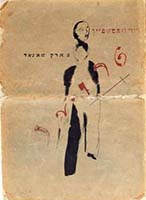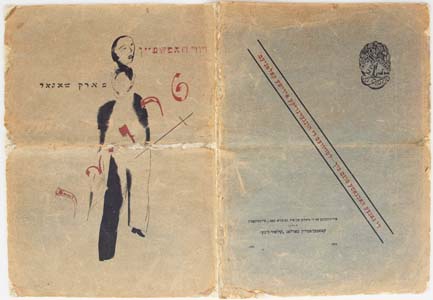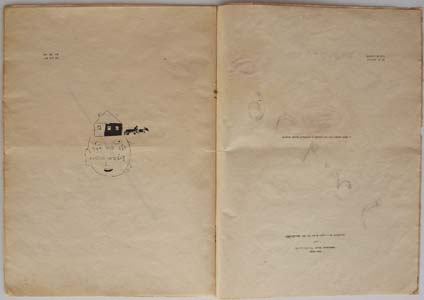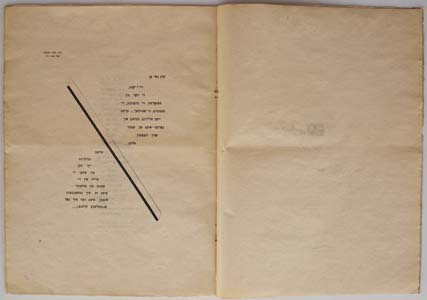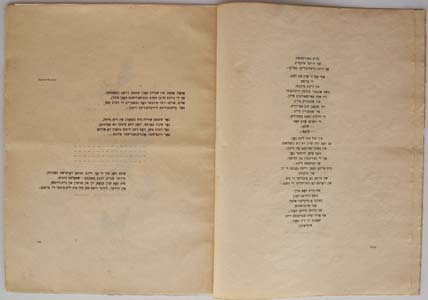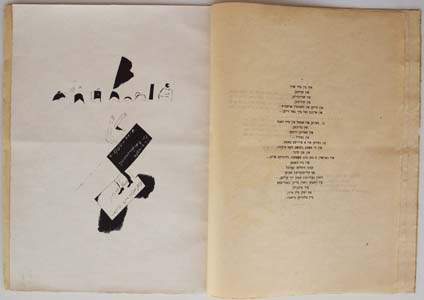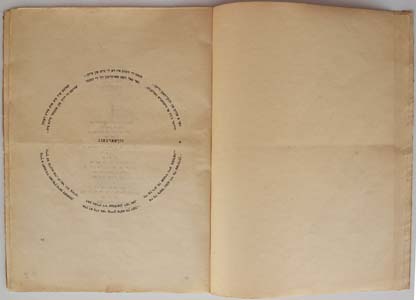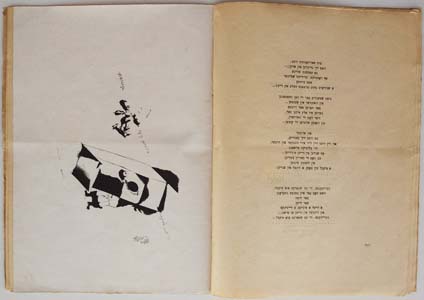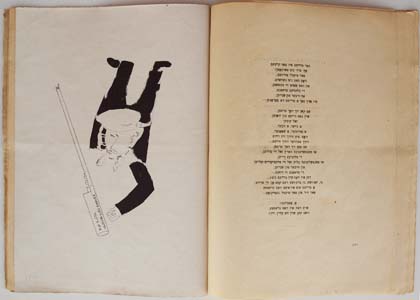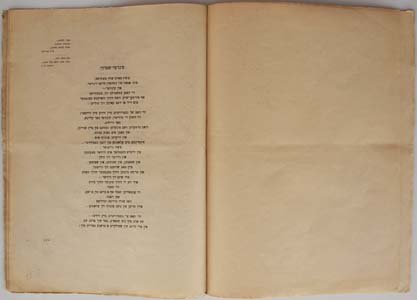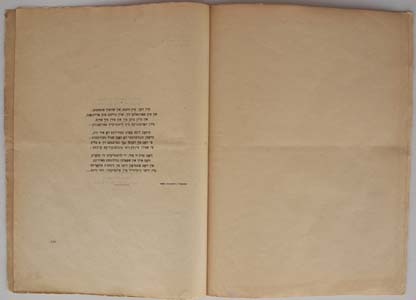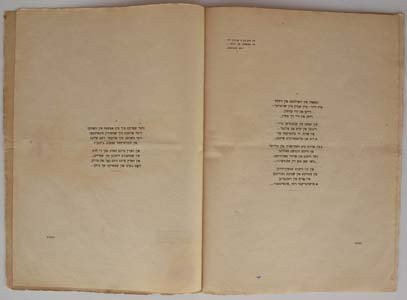|
Marc Chagall (1887 - 1985) [ |
3644 |
|||
|
|
David Hofstein Troyer Sorrow Kiev: Kultur-Lige, 1922 358 x 266 mm. 24 pages Edition: 4,500.
|
David Hofstein and Marc Chagall worked together on this publication in Moscow in 1922. Their intention was to create a combined art work that would forge verbal and visual elements together into an indivisible unity. Troier is a book that laments the victims of the Civil War pogroms of 1919-1920. Their inspiration came from the book art of the Russian Futurists who had developed a close bond between text and book illustration. The cycle of 11 poems by Hofstein describes the decline of the shtetl and tragic existence of the Ukrainian Jews. In his drawings Chagall uses bitter satire to vent anger and pain. All 10 designs show diagonal, suprematist elements incorporating words and sentences. The illustration to poem nr. 9 shows a village, a shtetl, on legs in trousers. From an open window, a man calls out: Why should I need the light of clarity? The poem: No roof, no walls, describes a ruined shtetl. The trousers are guided by feet that point in opposite direction. There is no guidance and no power in this walking shtetl. The sharp lines and the black-and-white contrast in the image (without any shadow) suggest that all goes to ruins. It is the image, in words and visual elements, of an execution: the beheading of the Jewish shtetl. References: Meyer 1963, B 83 Jeruzalem 1988, nr. 150 Kamensky 1989, p. 256 Getty 1997, nr. 241 Kazovsky 2003, Nr. 8 Paris 2009, Nr. 67 Kazovsky 2011, Nr. 71 Düsseldorf 2018, no. 9 |
||
